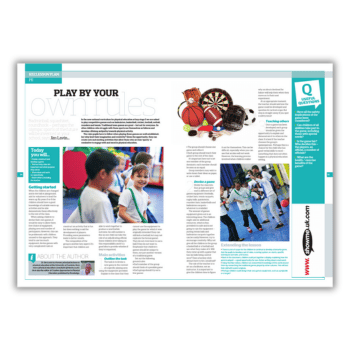Badminball, squashket, roundhock – perhaps the Olympic sports of the future will be invented at your school with this KS2 PE lesson plan…
In KS2 PE, children play competitive games such as badminton, basketball, cricket, football, netball, rounders and tennis.
Traditional team games are great – but not for everyone. So often children who struggle with these sports see themselves as failures and develop a lifelong antipathy towards physical activity.
The rules pupils have to follow when playing these games are well established, but why limit their imagination and creativity?
Given the opportunity, they can create new and exciting activities that allow those who are less ‘sporty’ or combative to engage with and excel in physical education.
KS2 PE learning objectives
- Create, construct and develop a game
- Find out why rules are important and what purpose they serve
- Share ideas and work co-operatively
- Teach others, including the teacher
Getting started
When asking children to devise their own games, it would be easy to allow them free choice of equipment, playing area and number of participants.
However, this can be problematic with children unused to this approach. They tend to use too much equipment, devise games with very complicated rules or construct an activity that is fun but does nothing to aid the development of players. Providing some parameters leads to better results.
The composition of the group is another key aspect. It’s important that children are able to work together to produce a worthwhile outcome.
An odd number is fine as one child can take the role of an adjudicating official. Some children love taking on this responsibility and it’s a good idea to provide whistles if they’re requested.
Dr Jim Lavin is a former principal lecturer in physical education at the University of Cumbria. He is now a physical education consultant. He is also the editor of Creative Approaches to Physical Education, published by Routledge.














